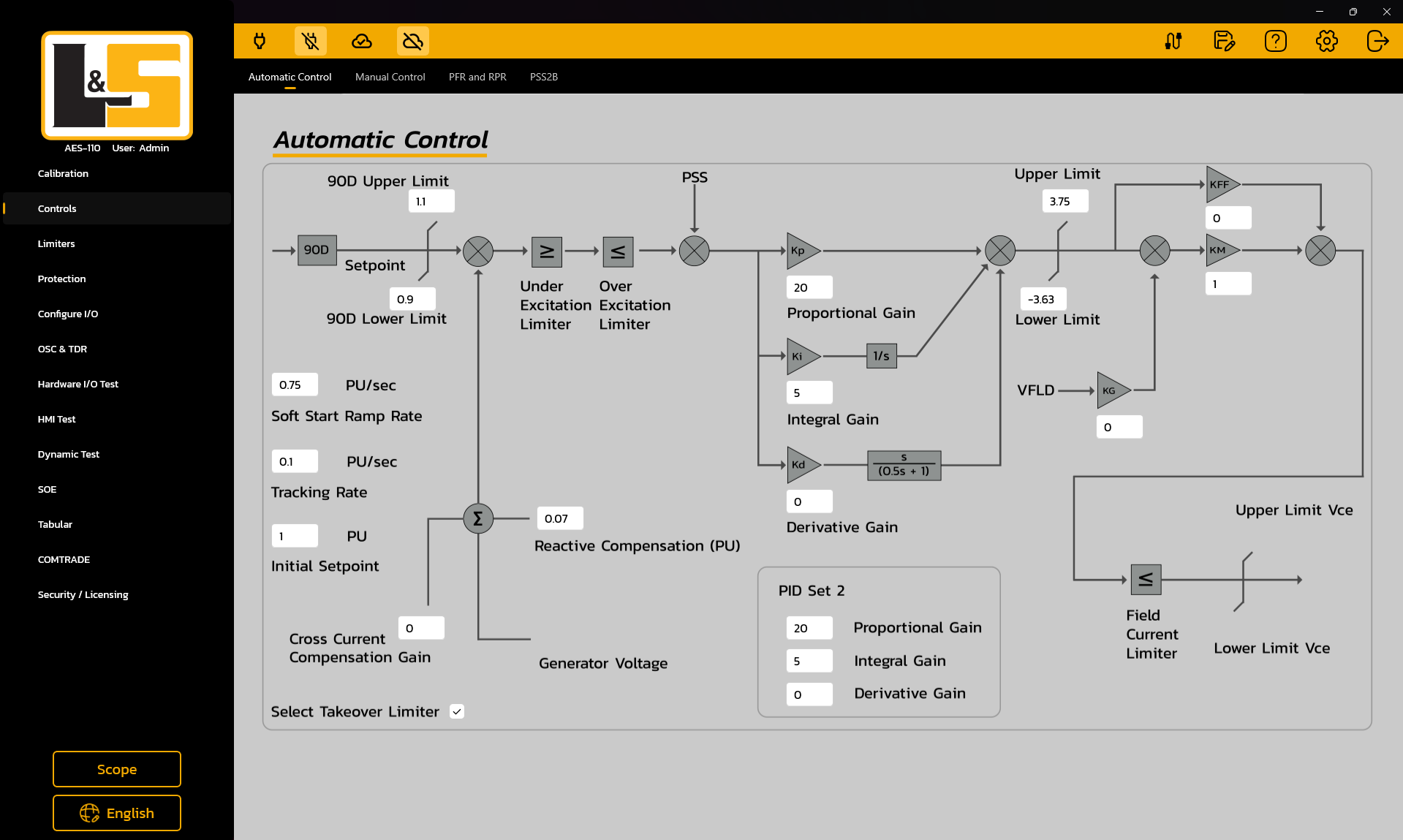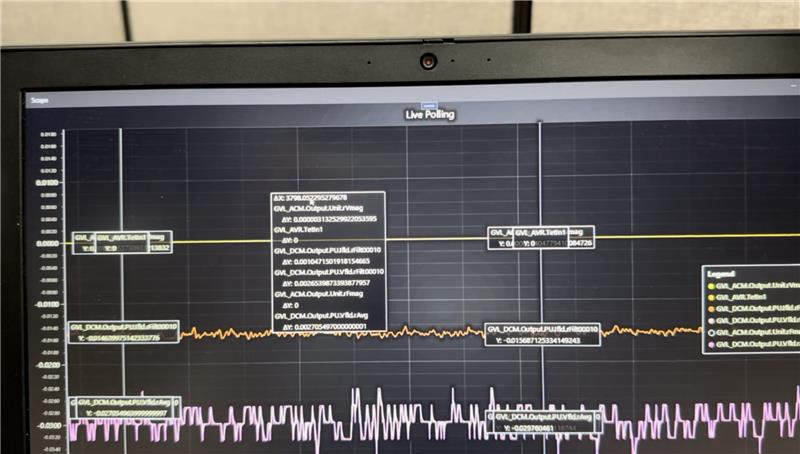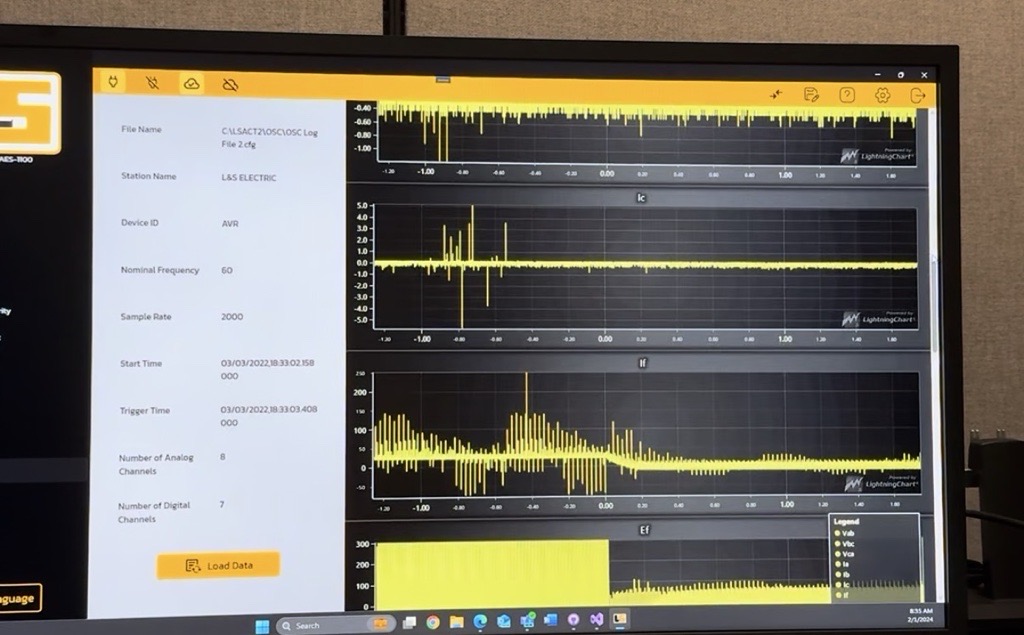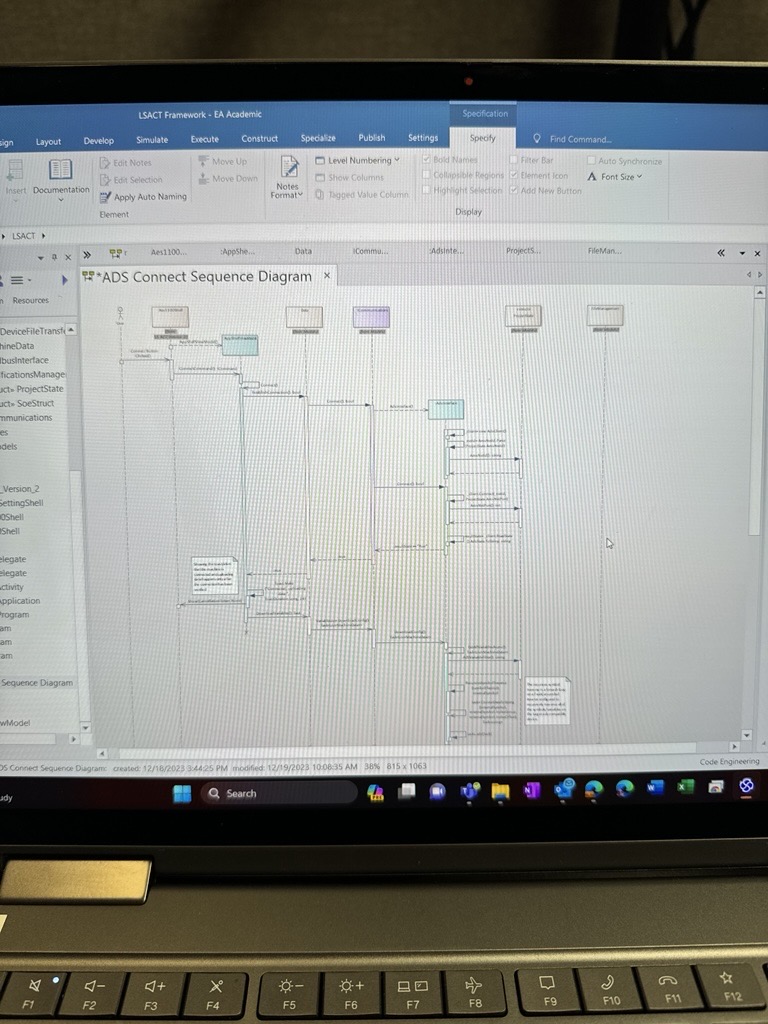Problem Statement: L & S Electric needed a modern, comprehensive desktop application for hydro power excitation system configuration and control. The application needed to provide real-time data visualization, advanced scope analysis, COMTRADE file support for fault analysis, and automated control sequences. The solution had to be reliable, performant, and intuitive for electrical engineers and technicians working with complex power distribution systems.
Solution: I developed a full-stack enterprise desktop application using .NET MAUI that provides comprehensive power system monitoring, configuration, and control capabilities. The application features multiple specialized pages and modes for configuration of both the AES-110 and AES-1100 from L & S Electric, advanced multi-channel oscilloscope functionality with zoom bands, COMTRADE file parsing and visualization for fault analysis, synchroscope displays, capability curve monitoring, and detailed metering. The system communicates with L & S Electric's excitation systems using the TwinCAT ADS protocol and utilizes complex data structures and multithreading to handle real-time data streams efficiently.
Skills Used:
- C#
- .NET MAUI
- XAML
- MVVM Architecture
- JavaScript
- Desktop Application Development
- TwinCAT ADS
- Real-time Data Processing
- Multithreading
- Asynchronous Programming
- Data Structures
- COMTRADE File Parsing
- Industrial Control Systems
- PLC Communication
- Data Visualization
- GitHub



